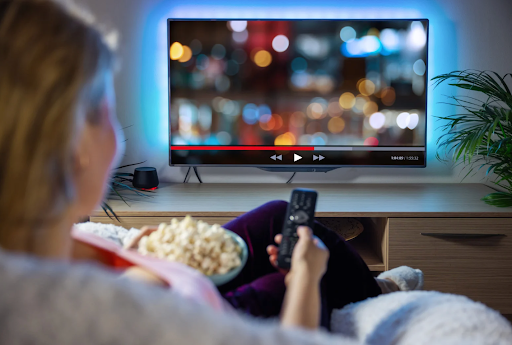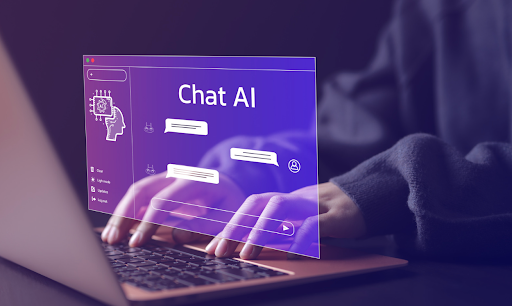
Is AI taking over TV?
Recently, Netflix’s The Circle made waves by using a nonhuman contestant to compete in their popularity-based competition.
Coming in as “Max,” a friendly, relatable dog lover, this AI went toe-to-toe with humans in a first of its kind take on reality television.
“The Circle is a fun reality competition, but it’s also a show that says something about our relationship with technology, the way we interact with it, and the way it changes the way we communicate,” says Niall O’Driscoll, senior vice president of development at Studio Lambert, who helped create the AI chatbot. “For a couple seasons now, we’ve been talking about [the idea of making] one of the players a chatbot because the biggest conversation around tech has been about AI, so we thought that this really feels like the time to do it.”

The team began exploring various chat-based platforms to see if any of them had the capacity to pull off the rhythm of a real conversation, in addition to both comprehending and implementing game strategy. After scraping information from around the internet up until 2021, as well as everything that happened in previous seasons of The Circle, the first iteration of their AI bot was born within a set of specific guidelines.
Once the AI generated its own character (the persona of Max was just one of a few options), O’Driscoll and the team got to work figuring out how the chatbot would interact within a game like The Circle.
One of the contestants on this season was even an AI engineer. The engineer and contestant Myles explained that he works with a different form of intelligence and not chatbots. He also listed the variables you need to consider when trying to spot AI.He wondered if the photos were generated.
“I have my suspicions because it’s an open source model, but to process and inject that much into the prompt you kind of have limitations on that and your token inputs also,” he explained. “So I was kind of like there has to be something going on here, and it’s just too hard to tell.” Myles said he doesn’t know how they’re selecting which prompts to put in Max’s conversations. He said he’s interacting with chatbots more after the show. “You’d have to have in-depth conversations with each player that early in the game,” he said. “You just wouldn’t be able to tell because it’s all surface level, you don’t really get to know the players in the first four days.”
While this provides an entertaining angle, what will this mean for the bigger picture when we are online more than ever?
“Using a chatbot in a reality competition is an interesting experiment on how people can or cannot detect AI online. It will become increasingly more difficult to decipher from real people or AI-driven chatbots when it comes to posting online. However, it’s important to note that while chatbots get more sophisticated, so do chatbot detection algorithms. Social media platforms will likely develop ways to detect AI, and will hopefully be able to notify human users when an account is suspected of being AI. This technology will be critical in the coming years to help people sort out what is real and what is generated,” says Brian Sathianathan, Co-Founder of Iterate.ai.

The inclusion of an AI contestant in Netflix’s “The Circle” not only pushes the boundaries of traditional reality TV but also prompts deeper reflection on our evolving relationship with technology. As AI becomes more integrated into our daily interactions, distinguishing between human and machine-driven communications will become an increasingly complex task. Shows like “The Circle” highlight the potential for AI to blend seamlessly into social contexts, challenging our perceptions of authenticity and connection. As we navigate this new digital landscape, it will be imperative for technology developers and regulators alike to ensure that AI enriches human interaction rather than distorting it, keeping the digital world safe and discernible for all users.



